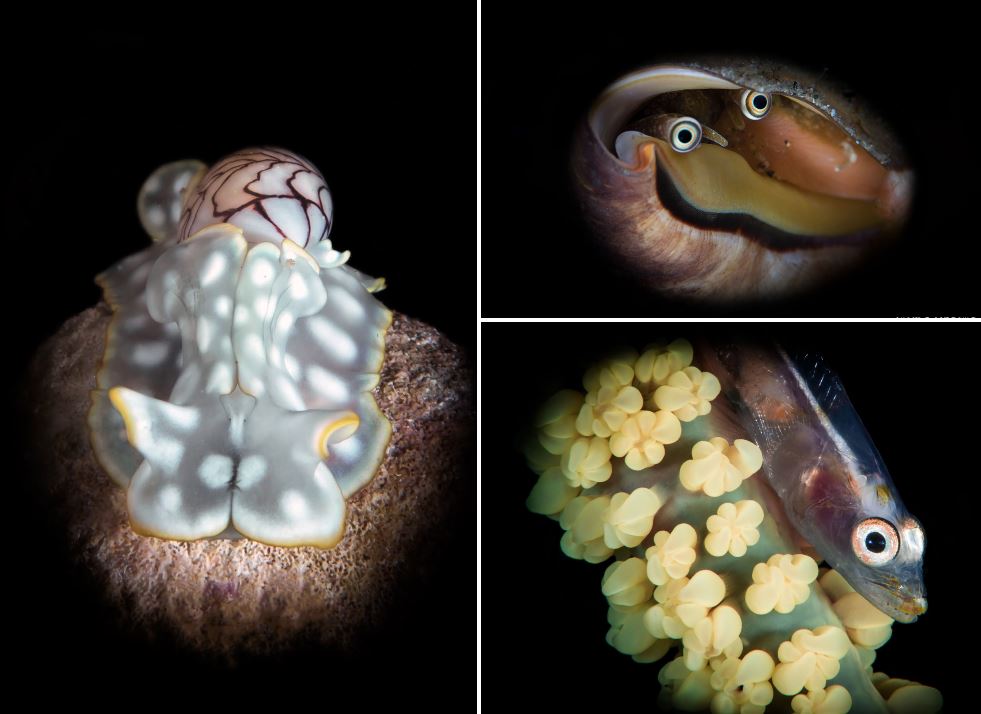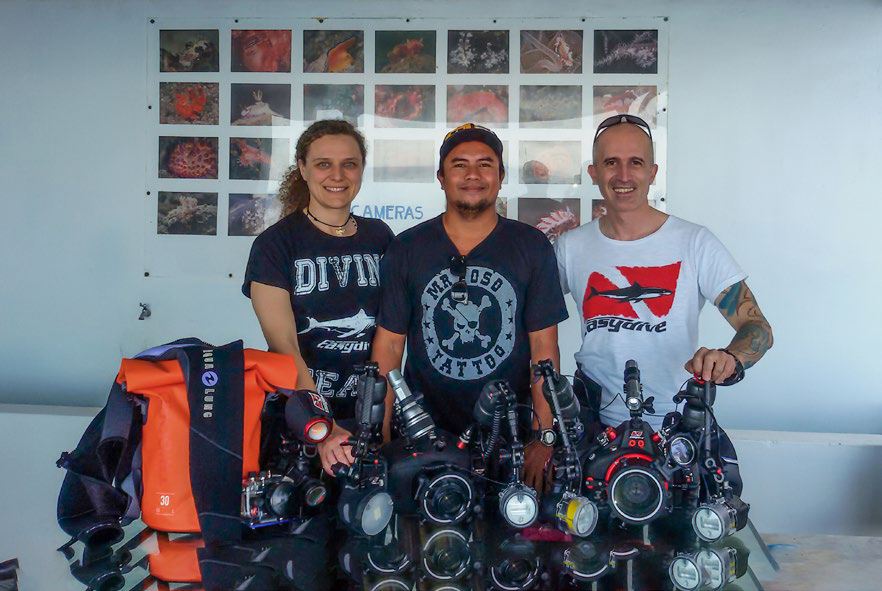
In recent years, the Philippines have become a must-have destination for underwater photography enthusiasts, especially two now renowned locations: Anilao and Puerto Galera, which I visited several times during my travels. So, let’s find out the peculiarities of these places.
It takes about 3 hour’s trip to reach Anilao from Manila Airport: the first part of the journey is on the highway, and then on secondary paved roads. Once to destination, it is striking that all of the resorts are oriented to diving (just look at the names, rather explanatory), which represents the driving economy for the small town.
Because of the place’s geography, with hills standing directly behind the sea, the resorts develop “vertically”, so keep in mind that reaching your room will require a minimum of effort, rewarded by the tranquility reigning in these places.
All dives, except for very rare cases of house reef accessible directly from the beach, are effected by the classic Filipino boats equipped with outriggers, the bangka, which allow convenient and fast navigation to all dive sites reachable in a short time: from 15 up to 45 minutes for the farther.
There are more than fifty sites where you can dive, a number that would require a twenty-day vacation to be able to visit them all, and that makes the idea of the potential of this destination. It can vary from vertical rocky walls encrusted by corals, to small sheltered bays with soft coral gardens, to the classic sweep of sand and mud, typical of muck dives.

The dive type with depths not exceeding 20-25 meters, water temperature around 28 degrees in December, and light or null currents, make this place within reach of any diver wanting to photograph or observe the real protagonists of these places: that is its countless, tiny inhabitants like pygmy seahorses, nudibranchs, cephalopods and crustaceans.
The advice is to rely on a local guide who, with extreme reliability and experience, will be able to lead you in your dive and discover the various beings in full respect of their habits. I must say that the level of professionalism is usually very high, therefore the guide will act so as not to cause damage to fauna during photo sessions so to get natural shots and not “built” at a table.
Some subjects are “seasonal”, therefore their presence is not always constant, but there is everything a macro underwater photography enthusiast could wish for: a “must” in this regard is a night dive at Anilao Pier hunting for squids, elusive and difficult to photograph; bobtail squids, with their amazing livery; coconut octopus, hiding in abandoned shells / shards / cups; and bobbit worms.
Essential, at equipment level, a good macro lens: a 60 or, better, a 100, to be able to make better use of additional lenses, possibly a +5 and +10 in order to capture even the smallest subjects, such as hairy or skeleton shrimps. I highly recommend bringing a good supply of rechargeable batteries, because the dives are rather long (personally, I got over 120 minutes), and the number of shots per dive could be significant: it is better to play it safe and change the batteries after each dive. After the stay in Anilao, you can easily move to Puerto Galera: the transfer through the Batangas Channel can be via private speedboat or public ferry, always very punctual and cheap.
Of course, that will lead to a greater waste of time.
Once at destination, you’ll realize that the location is definitely different from Anilao: instead of the previous “linear” coastline, you find an infinity of coves, bays and islets that make the place very characteristic and enjoyable.

In addition, the number and variety of resorts also makes you realize that the location is touristy, with the presence of several beaches and beach bars, missing in Anilao: for those looking for a bit of nightlife after diving, Puerto Galera certainly offers more entertainment options, with plenty of places easy to reach. Despite the proximity to Puerto Galera, there are some differences: the temperature (at least in my experience) is slightly less hot by a few degrees, and it rains more frequently.
Nothing annoying, but I suggest you bringing on board a fleece sweater and a k-way to get more comfort during the surface interval. The dives tend to be somewhat deeper compared to Anilao, almost everyone around 18 – 27 meters and with a ‘square’ profile, therefore dive times decrease.
It is always better to take a look at the computer to avoid getting into deco, while dedicating your efforts to photographing a particular subject. Should you be in a group, it is good practice (especially if you go searching for the sea fans hosting pygmy seahorses) to plan carefully both dive profile and timing, so that all divers can enjoy enough time to bring home a good shot. Even in Puerto Galera there are many walls to explore.
Moreover, the presence of Alma Jane Wreck, with a school of sedentary platax, offers (visibility permitting) the possibility of some very particular wide-angle shot. Inevitable, the break for the surface interval at the Sabang’s floating bar, a picturesque place where drinking a coffee between a dive and the other in some dive spots which are only a hundred meters or so from the bar itself.

Another PG’s highlight is muck dives: there are plenty of sand and mud stretches teeming with life.
In these cases, the use of a snoot to isolate the subject from the unpleasant background and avoid suspension is highly recommended. Here too the typical lens to use is a 100 macro, but considering that (on average), the subjects here are slightly larger than in Anilao, you can venture even to using shorter focal lengths to contain the suspension phenomenon.
An always-rewarding dive is Giant Clams: a stretch where you can appreciate all the guides’ research skills and train your eyes to the most to see the small and countless inhabitants of these seabeds.
At about an hour sailing from Puerto Galera, there’s Verde Island: a perfectly guarded marine protected area offering breathtaking scenery for wide-angle photography enthusiasts, with expanse coral reefs to eye loss and, deeper, the presence of huge sea fans.
These two destinations represent only a small part of what the Philippines can offer: a country that by its nature, the friendliness of its people and the good level of security is a great destination for a trip aimed at underwater photography.
WORDS and PICTURES by Ruggero Pastorino


















